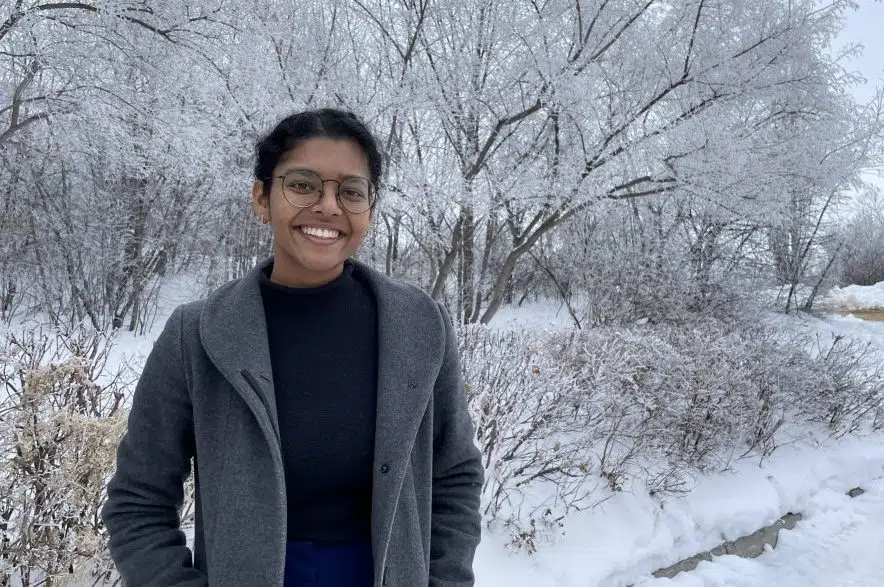Kirti Garg was first affected by the shortage of family doctors in Saskatoon when she was still just a patient.
“It’s really hard to find a family doctor, even as a medical student,” said Garg.
Garg, who’s in her third year at the University of Saskatchewan’s College of Medicine, said she’s starting to consider where she will complete her residency and what she’ll specialize in. Family medicine is enticing, Garg said, though she’s still far from deciding.
She recently spent four weeks in Rosthern as part of a clinical rotation, and said she loved learning about being a family physician and all the hands-on experience she gained in the rural town.
“I got to build such great relationships with my patients,” she said. “That was the specialty where I got to see my patients most often.”
Working as a family physician in a smaller centre like Rosthern means doctors are sometimes required to step in during emergency situations, help staff a walk-in clinic and take on their scheduled appointments, all within the same day, Garg explained.
While she was working in Moose Jaw, for example, Garg said a patient came in after suffering a heart attack, but didn’t realize that was what was happening to them when they attended the walk-in clinic.
“We kind of did a work up and then sent them to the emergency room, so you never know what you’re going to get,” Garg said.
Her favourite part of the work, she said, is seeing doctors working with the same patients for long periods.
“They come to you first with all their problems, which is very exciting. You get to do lots of problem solving and build that relationship and that trust with them,” she said.
Even in just four weeks, Garg said she was able to see some patients several times and start to build trust and knowledge about their individual ailments.
Saskatchewan’s hometown draw
The small programs Saskatchewan offers can make the province more attractive to medical students deciding where to do their residency, Garg said.
“Preceptors and doctors know you by name and care about your education, because they get to know you one on one,” Garg said.
Bigger centres can see lots of turnover and residents working with several different doctors, Garg said. That can sometimes be a good thing, Garg noted, though it might not be what all residents are looking for.
The smaller centres also offer residents the chance to try their hands at emergency care, acute care and have more control over their work in diverse cases, Garg said. During her weeks in Rosthern, Garg said she was able to travel to smaller communities with a doctor to provide medical care for patients who otherwise don’t have immediate access to a doctor in their town.
“I was really shocked to hear that was the only primary care they were getting,” Garg said. “If we’re having trouble getting access to care in a city like Saskatoon, how are people in rural communities getting access to care?”
While it does come with benefits, Garg noted that working in a smaller centre can also mean a lot of responsibility, a demanding schedule, isolation, long hours, extra tasks and seemingly endless problems.
“It’s exhausting, and maybe you’re not making as much money, and you kind of need that family economic support, emotional support,” Garg said.
When it comes to the shortage of physicians in Saskatchewan, Garg said she doesn’t think students’ choices in residency locations are playing a major factor.
“We definitely have enough interest,” she said. “We need more spots, if anything.”
Residency process
Garg said the residency process involves students selecting and ranking the locations where they’d like to be considered for residency, and then matching to one of them through the program.
Students don’t have any say over which spot they get, and there’s no guarantee they’ll receive their first choice, Garg said, but students won’t be matched with a residency they didn’t select as one of their choices.
Family medicine offers the shortest available residency at two years — though that could become three in the near future — but students choosing family medicine might be more open to working in smaller centres than the students settling in for a seven- to 10-year residency in a more involved specialty. Family medicine residencies are also a bit easier to match with, Garg said.
A longer residency might lead Saskatchewan students to choose to stay closer to home and their support systems, Garg said, or they might want to stay closer to home because they’ve already put down roots with partners and children.
“I think that’s what kind of attracts a lot of people who have done medical school to stay in Saskatchewan,” Garg said.
When spots go unfilled, Garg said it’s usually because of the location of the job, like positions in Quebec where candidates need to know French, or small towns far away from urban centres.
That said, Garg added that it can also be hard to attract people to rural positions that will come with added responsibilities but without extra incentives.
Pay is biggest deterrent
Garg said one of the most significant factors driving students away from family medicine is the pay. Family medicine is one of the lowest-paid medical areas and has some of the highest rates of burnout, she said.
Regardless of the laundry list of problems that a family doctor may have to deal with when they see a patient, Garg they only earn about $30 per patient visit, creating a significant disparity in income between family doctors and those with different specialties.
“I know everyone expects and wants doctors to be selfless, and a lot of doctors love the work that they do and want to take the best care of their patients, but a lot of times it’s kind of expected that they work out of pocket, and a lot of family doctors end up doing a lot of work for free,” Garg said.
Many family doctors are fighting burnout and mounting pressure, Garg said, with maxed-out patient lists and full waiting rooms at walk-in clinics. Physicians, she said, simply can’t deal with every problem a patient is facing during their visit — possibly creating more problems later for the health system because of the needs that a doctor can’t address.
Patients are frustrated and stressed about their care, and doctors want to provide it, Garg said, but in most cases they’re already operating at maximum capacity.
“It’s not always in the hands of physicians to decrease those wait times,” Garg said.
And while the landscape that Garg will soon be entering as a resident can be “a bit scary and daunting at times,” the medical student said she feels improvements can and will be made.
“I love and enjoy family medicine,” Garg said, “and I’m optimistic and hopeful.”
Opportunities for improvement
Dr. Carla Holinaty, a family doctor and vice-president of the Saskatoon Medical Staff Association, said a lot of work and many changes have happened at the College of Medicine to encourage prospective doctors to choose family medicine.
Those changes included increasing early exposure to family medicine, Holinaty said, but it’s ultimately up to students to choose their own path. Keeping family doctors around goes well beyond their education and residency, she added.
“Once people have finished their training and they’ve entered the practice of family medicine, there’s a lot of pull to have them move to other places,” Holinaty said.
Holinaty said the doctor shortage is widespread, and doctors can be enticed with positions that have less overhead and higher pay.
“We often see a loss in family physicians to those other positions,” she said.
That’s in addition to the growing number of doctors retiring or moving away from clinical medicine, Holinaty added.
Though she’s still a student, Garg said she can see areas where family medicine could be improved to help entice students and improve patient care.
Garg said she believes appropriate pay for the complexity of patient problems, as well as the time and attention spent on a patient, should be considered when determining a physician’s compensation. Not only would physicians get more out of the work they’re already doing, but she said that measure could also help mitigate more severe health concerns down the line for patients who would otherwise add more pressure to the health-care system.
“I honestly think that’s a much better use of our resources,” Garg said.
As a member of the university’s Family Medicine Club, Garg said she already sees opportunities for leadership and how she and her peers can step up to highlight problems and work towards solutions.
She said it could also be beneficial to increase the number of medical school spots reserved for Indigenous students. With many remote Indigenous communities in Saskatchewan lacking regular access to care, Garg said there could be immense benefit to training more Indigenous students in the field.
“They know these communities. That’s their family and they know these places the best and can provide the best care possible for communities that they’re so familiar with,” Garg said.
“It’s really hard to attract doctors from bigger centres like, say, Toronto or even Saskatoon to want to work in a really small rural place in Saskatchewan that they’ve never visited.”











